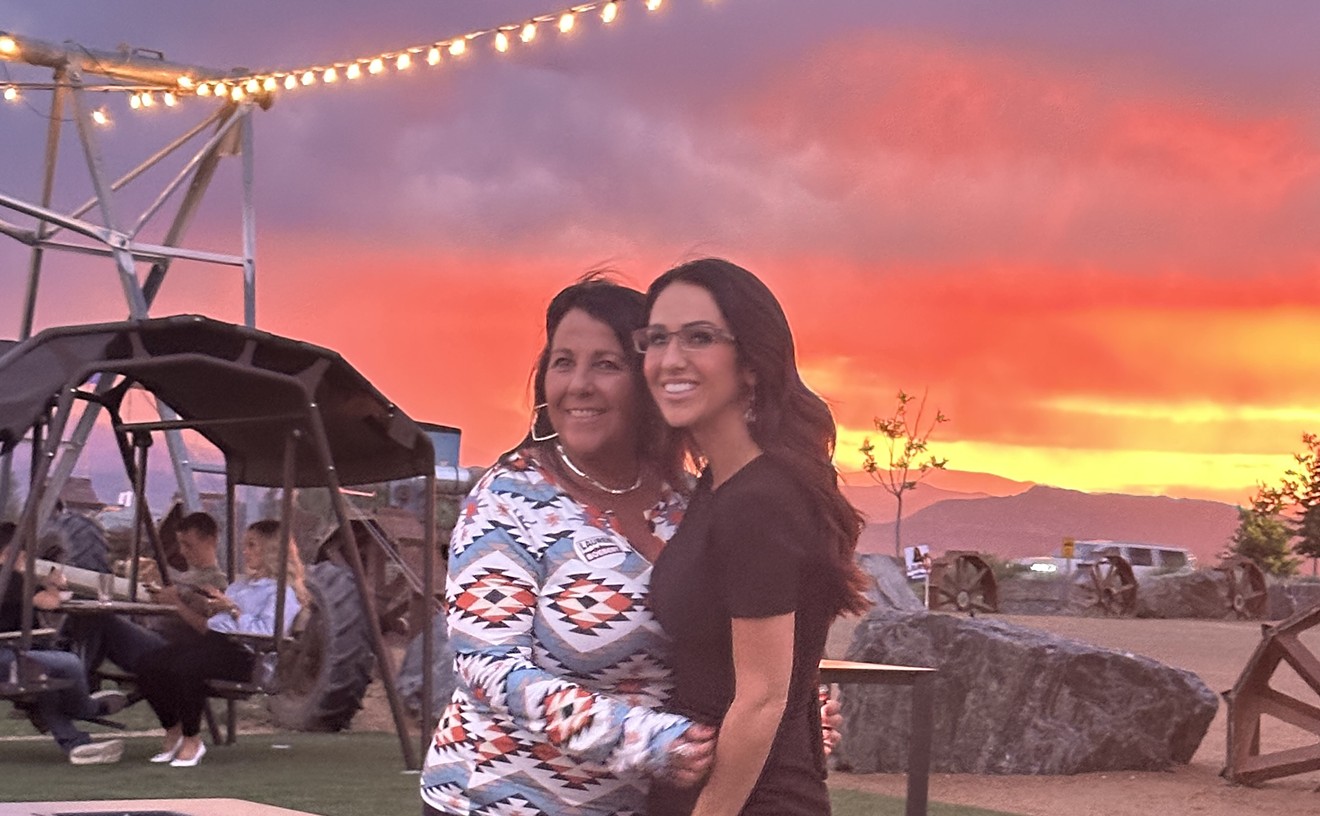Colorado's Mesa County was recently singled out by the Centers for Disease Control and Prevention as a national poster child for the negative repercussions of low COVID-19 vaccination rates. Now the CDC warns that the entire state's fight against the novel coronavirus is at risk of a serious downturn, thanks to a spike of the disease's so-called Delta variant, which officials at the Colorado Department of Public Health and Environment say is more contagious and can have severe consequences for those infected by it.
At a press conference o, June 21, Dr. Rachel Herlihy, Colorado's lead epidemiologist, was among those raising alarms about the Delta variant, B.1.617.2, which was first discovered in India. According to the CDPHE, Colorado has the second-highest number of new COVID-19 cases in the U.S. caused by the variant, trailing only Missouri.
The CDPHE page devoted to COVID-19 data now includes a chart that reveals variants of concern and their rising impact from late last year through the week of May 30, the most recent for which statistics are available. This screen capture from the site shows the changes over time:
The first variant tracked by the CDPHE was B.1.1.7, now referred to as the Alpha variant. Until mid-January, it accounted for only a small proportion of infections, but that percentage soon began growing, peaking (for now) on the week of May 2. Over that span, the Alpha variant was linked to 77 percent of the new cases in Colorado.
The Beta variant (B.1.351) and the two Epsilon variants (B.1.427 and B.1.429) also began spreading widely in Colorado around January and February, with the Gamma variant (P.1) joining the infectious mix in late March.
The first appearance of the Delta variant came on the week of April 18, when it was tied to only 0.42 percent of the new cases that week, as compared to 69.33 percent for the Alpha variant. But Delta kept growing over the next month-plus: 2.97 percent on April 25, 7.2 percent on May 9, 20.78 percent on May 16 and 24.26 percent on May 23.
The big leap occurred on May 30, when the Delta variant hit 40 percent. That week, there were no cases tied to the Beta variant or either of the Epsilon variants, and the Gamma variant registered just 2 percent. That left 48 percent for the Alpha variant and 10 percent designated ominously as "Other."
Vaccines offer a strong defense against the Delta variant, Herlihy stressed at the briefing, if not quite as strong as previously advertised. The Pfizer and Moderna medications are estimated as approximately 88 percent effective at preventing Delta infections, versus around 95 percent efficacy when faced with the Alpha variant. The benefits of the Janssen, or Johnson & Johnson, vaccine against the Delta variant are less clear, but the CDPHE still suggests that any and all immunizations are more vital now than ever now, particularly given lowered restrictions related to masking and social distancing.
And then there's the higher risk of serious illness from the Delta variant. Herlihy put it this way: "If you were exposed to COVID-19 now and were infected, your chances of being hospitalized now are much higher than earlier in the pandemic."
Oh, yeah: The Delta variant percentages in Colorado during June are expected to be even higher.
[
{
"name": "Air - MediumRectangle - Inline Content - Mobile Display Size",
"component": "12017618",
"insertPoint": "2",
"requiredCountToDisplay": "2",
"watchElement": ".fdn-content-body",
"astAdList": [
{
"adType": "rectangle",
"displayTargets": "mobile"
}
]
},{
"name": "Editor Picks",
"component": "17242653",
"insertPoint": "4",
"requiredCountToDisplay": "1",
"watchElement": ".fdn-content-body",
"astAdList": [
{
"adType": "rectangle",
"displayTargets": "desktop|tablet"
},{
"adType": "rectangle",
"displayTargets": "desktop|tablet|mobile"
}
]
},{
"name": "Inline Links",
"component": "18838239",
"insertPoint": "8th",
"startingPoint": 8,
"requiredCountToDisplay": "7",
"maxInsertions": 25
},{
"name": "Air - MediumRectangle - Combo - Inline Content",
"component": "17261320",
"insertPoint": "8th",
"startingPoint": 8,
"requiredCountToDisplay": "7",
"maxInsertions": 25,
"watchElement": ".fdn-content-body",
"astAdList": [
{
"adType": "rectangle",
"displayTargets": "desktop|tablet"
},{
"adType": "rectangle",
"displayTargets": "desktop|tablet|mobile"
}
]
},{
"name": "Inline Links",
"component": "18838239",
"insertPoint": "8th",
"startingPoint": 12,
"requiredCountToDisplay": "11",
"maxInsertions": 25
},{
"name": "Air - Leaderboard Tower - Combo - Inline Content",
"component": "17261321",
"insertPoint": "8th",
"startingPoint": 12,
"requiredCountToDisplay": "11",
"maxInsertions": 25,
"watchElement": ".fdn-content-body",
"astAdList": [
{
"adType": "leaderboardInlineContent",
"displayTargets": "desktop|tablet"
},{
"adType": "tower",
"displayTargets": "mobile"
}
]
}
]













